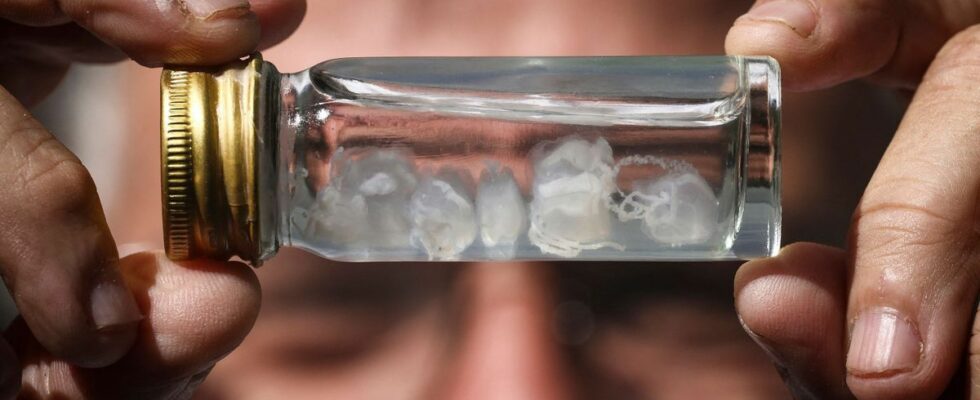Published on
Updated
Reading 3 min.
The tiny irukandji jellyfish, endemic to northern Australia, is formidable: a simple sting causes unbearable pain, but its venom can save lives.
Jamie Seymour has already been stung eleven times. This professor of toxicology at James Cook University in Queensland, northeast Australia, studies the world’s most dangerous marine animals to understand how they can help make antivenom.
In his hangar, dozens of irukandji jellyfish, some no bigger than a sesame seed, float in tanks.
In another pool swims a stonefish, the most venomous fish in the world. Its very hard thorns pierce the skin and the pain is so great that it can lead to loss of consciousness or even death. Mr. Seymour himself is one of the people who survived one of his stings.
In his hangar, the biologist points out other deadly species, including a box jellyfish capable of killing a human being in 10 minutes.
“Australia is undoubtedly the most poisonous continent in the world“, explains Mr. Seymour to AFP, even if deaths are rare.
Delicate process
According to the latest available data, between 2001 and 2017, there were 32 animal-related deaths per year in Australia – most attributed to horses or cows.
Since 1883, the irukandji jellyfish has caused two deaths, compared to 69 for the box jellyfish.
“There are between 3,000 and 5,000 deaths a year in Australia due to drugs, alcohol and car accidents. The probability of being stung by an animal in Australia – or bitten – is therefore within reason.“, underlines Mr. Seymour.
His facility is the only one to extract the venom from these deadly marine animals and transform it into antivenom. The process is delicate, however.
For the box jellyfish, researchers remove the tentacles, freeze-dry them and collect the venom once it has solidified.
There is no antivenom for the irukandji jellyfish.
For stonefish, one method involves inserting a syringe into the fish’s venom glands and drawing out a few milliliters of the deadly fluid. Once researchers have collected enough, they send the venom to a laboratory which turns it into antivenom.
Then, “a small amount of this venom is injected for six months into an animal, such as a horse, which produces natural antibodies“.
The animal’s plasma is then collected and the antibodies extracted, purified and reduced to an antivenom for humans.
These substances are then shipped to hospitals in Australia and some Pacific islands, where they can be administered in the event of a sting or bite.
“We have some of the best antivenoms in the world, there’s no doubt about that. The time and effort put into their production sets us apart from most other countries“, says Mr. Seymour.
Climate change
According to scientists, climate change could increase the risk of bites.
About sixty years ago, the known period of irukandji jellyfish stings extended from November to December.
Now, rising ocean temperatures are extending into March, also pushing these deadly jellyfish further south.
Seymour’s students discovered that changes in temperature can also change the toxicity of the venom.
“For example, if I make antivenom for an animal at 20 degrees and I get bitten by an animal that lives in the wild at 30 degrees, that antivenom will not work“, he explains.
The venom of stinging creatures could even be used to treat a myriad of other health conditions, including curing rheumatoid arthritis.
This area of research remains largely underfunded.
“When we think of venom, we think of it as ratatouille. It contains a whole bunch of different components” said Mr. Seymour. “What we’re trying to do is separate these elements and figure out what’s going on.”
